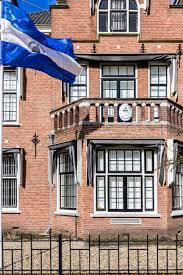Retail > Other Retail
Agriculture
After 1950 the scope of capital-intensive modern agriculture increased greatly. This growth was concentrated in export crops, while crops destined for domestic use continued to be produced by traditional labor-intensive methods. The shift to industrialized agriculture also significantly reduced the proportion of the population directly dependent on agriculture.
Read more
Communications
For most Nicaraguans radio and TV are the main sources of news. There are more than 100 radio stations, many of them in the capital, and several TV networks. Cable TV is available in most urban areas.
The print media are varied and partisan, representing pro and anti-government positions.
Read more
Cuisine
The Cuisine of Nicaragua is a mixture of criollo food and dishes of pre-Columbian origin. The Spaniards found that the Creole people had incorporated local foods available in the area into their cuisine.Traditional cuisine changes from the Pacific to the Caribbean coast; while the Pacific coast’s main staple revolves around local fruits and corn, the Caribbean coast cuisine makes use of seafood and the coconut.
Read more
NICARAGUA
Nicaragua, officially the Republic of Nicaragua, is the largest country in the Central American isthmus, bordering Honduras to the north and Costa Rica to the south. The country is situated between 11 and 14 degrees north of the Equator in the Northern Hemisphere, which places it entirely within the tropics. The Pacific Ocean lies to the west, and the Caribbean Sea to the east. The country’s physical geography divides it into three major zones: Pacific lowlands; wet, cooler central highlands; and the Caribbean lowlands. On the Pacific side of the country are the two largest fresh water lakes in Central America, Lake Managua and Lake Nicaragua. The Island of Ometepe Island is located inside Lake Nicaragua, and is well known for its popularity among tourists. Surrounding these lakes and extending to their northwest along the rift valley of the Gulf of Fonseca are fertile lowland plains, with soil highly enriched by ash from nearby volcanoes of the central highlands. Nicaragua’s abundance of biologically significant and unique ecosystems contribute to Mesoamerica’s designation as a biodiversity hotspot.
The Spanish Empire conquered the region in the 16th century. Nicaragua achieved its independence from Spain in 1821. Since its independence, Nicaragua has undergone periods of political unrest, dictatorship, and fiscal crisis—the most notable causes that led to the Nicaraguan Revolution of the 1960s and 1970s. Nicaragua is a representative democratic republic, and has experienced economic growth and political stability in recent years. In 1990, Nicaragua elected Violeta Chamorro as its president, making it the first country in Central American history and the second in the Western Hemisphere to democratically elect a female head of state.

Details
- Last Updated
- 17/Oct/2024
- Contact
- Dana D. Deree
- [email protected]
- Phone
- (213) 252-1170
- Website
- http://consuladodenicaragua.com/
- Address
- 3550 Wilshire BlvdLos Angeles, CA 90010
